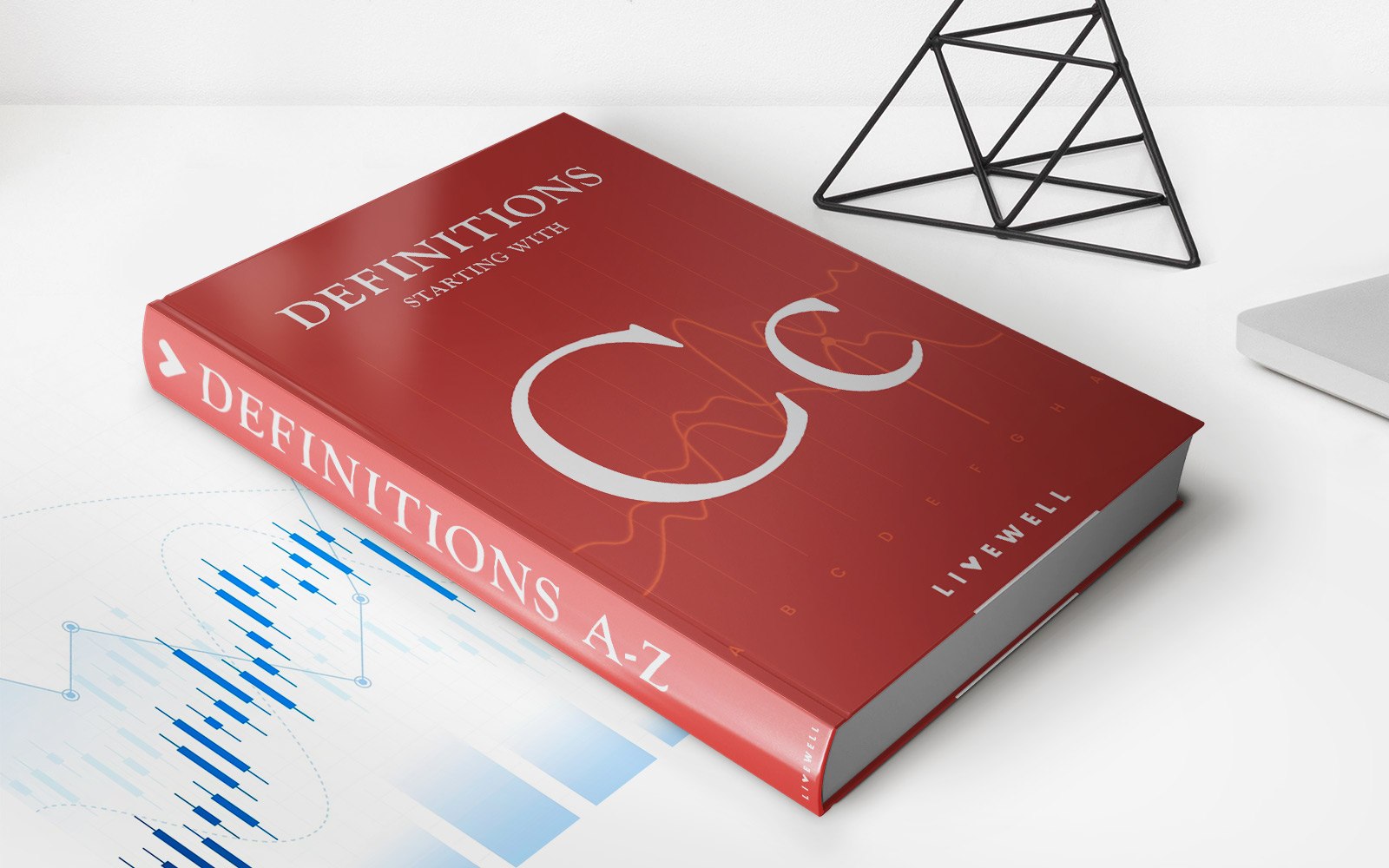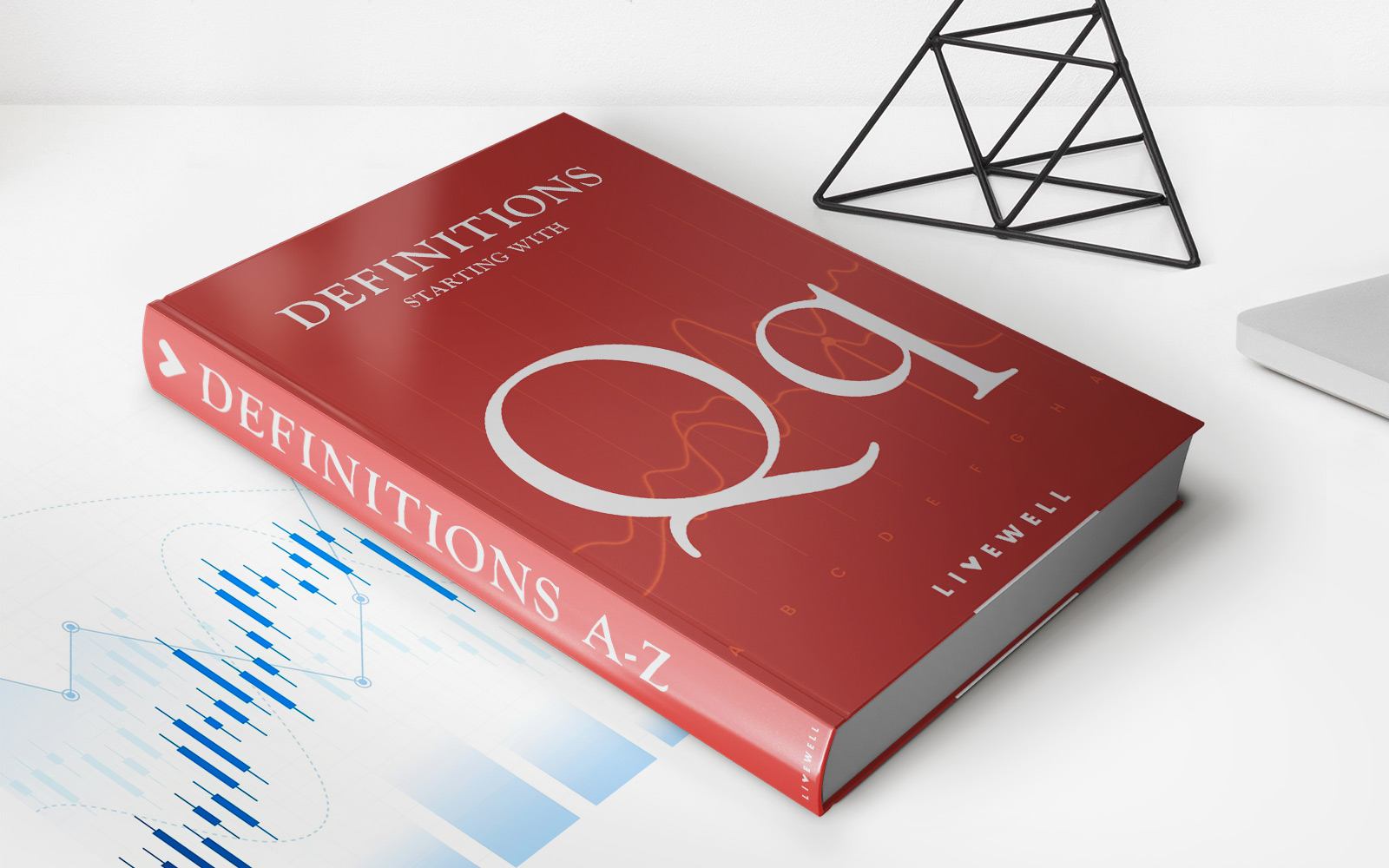

Finance
What Is The Difference Between 401K And 457
Published: October 17, 2023
Learn the key differences between 401K and 457 retirement plans and understand their importance in personal finance.
(Many of the links in this article redirect to a specific reviewed product. Your purchase of these products through affiliate links helps to generate commission for LiveWell, at no extra cost. Learn more)
Table of Contents
- Introduction
- Overview of 401(k)
- Overview of 457
- Key Differences between 401(k) and 457
- Eligibility Requirements for 401(k) and 457
- Contribution Limits for 401(k) and 457
- Withdrawal Rules and Penalties for 401(k) and 457
- Taxation of 401(k) and 457 Contributions
- Employer Matching Contributions for 401(k) and 457
- Portability of 401(k) and 457 Plans
- Access to Funds in Case of Financial Hardship
- Final Thoughts and Considerations
Introduction
When it comes to retirement savings, there are several options available, each with its unique set of features and benefits. Two popular retirement plans that individuals can contribute to are the 401(k) and the 457 plans. While both plans are designed to help individuals save for retirement, there are fundamental differences between the two that individuals need to understand to make informed decisions about their retirement savings.
In this article, we will provide an overview of the 401(k) and 457 plans and discuss the key differences between them. We will also delve into eligibility requirements, contribution limits, withdrawal rules, taxation implications, and other important considerations associated with these retirement plans.
Understanding the distinctions between the 401(k) and 457 plans is crucial for individuals who want to optimize their retirement savings and plan for a financially secure future. By gaining insights into the unique features and benefits of each plan, individuals can make informed decisions based on their personal financial goals and circumstances.
Whether you are an employee, self-employed individual, or employer seeking to offer retirement savings options to your employees, this article will provide you with a comprehensive understanding of the differences between the 401(k) and 457 plans. Let’s dive in and explore the intricacies of these retirement savings options.
Overview of 401(k)
The 401(k) plan is a popular employer-sponsored retirement savings plan that allows employees to contribute a portion of their pre-tax income towards their retirement savings. The contributions grow on a tax-deferred basis, meaning that individuals do not pay taxes on their contributions or investment gains until they withdraw the funds during retirement.
One of the key advantages of a 401(k) plan is the potential for employer matching contributions. Many employers offer a matching contribution, where they contribute a percentage of the employee’s contribution, up to a certain limit. This is essentially free money that can help individuals boost their retirement savings.
401(k) plans typically offer a diverse range of investment options, including mutual funds, stocks, bonds, and target-date funds. This allows individuals to customize their investment portfolio based on their risk tolerance and investment preferences.
Another noteworthy aspect of 401(k) plans is the contribution limit. In 2021, individuals can contribute up to $19,500 to their 401(k) account, with an additional catch-up contribution of $6,500 for individuals aged 50 and older.
It is important to note that 401(k) plans are typically offered by private sector employers. However, some governmental organizations, educational institutions, and certain non-profit organizations may also offer a variant of the 401(k) plan known as a 403(b) plan.
Overall, the 401(k) plan provides individuals with a convenient and tax-advantaged way to save for retirement. The ability to contribute pre-tax income, the potential for employer matching contributions, and the wide range of investment options make the 401(k) plan an attractive choice for individuals looking to build their retirement nest egg.
Overview of 457
The 457 plan is another popular retirement savings option available to employees of state and local governments, as well as some tax-exempt organizations. Similar to the 401(k) plan, the 457 plan allows individuals to save for retirement on a tax-deferred basis. However, there are some key differences that set the 457 plan apart.
One notable distinction is that the 457 plan has no restriction on the participant’s age or employment status. This means that individuals can contribute to a 457 plan regardless of their age or whether they are still actively employed by the sponsoring organization. This flexibility can be advantageous for individuals who anticipate retiring early or transitioning to a new job.
Another difference is the contribution limits for the 457 plan. In 2021, the contribution limit for a 457 plan is $19,500, the same as the 401(k) plan. However, individuals who are within three years of their plan’s designated retirement age may be eligible for additional catch-up contributions, known as the “special catch-up” provision. This provision allows participants to contribute an amount equal to the lesser of twice the annual limit or the unused portion of their previous years’ contribution limits.
Similar to the 401(k) plan, the 457 plan also offers a range of investment options, including mutual funds, stocks, bonds, and target-date funds. Participants can customize their investment portfolio based on their risk tolerance and long-term financial goals.
It is important to note that there are two types of 457 plans: the 457(b) plan and the 457(f) plan. The 457(b) plan is more common and is available to most employees of state and local governments. The 457(f) plan, on the other hand, is typically reserved for highly compensated employees and has additional restrictions on contributions and withdrawals.
Overall, the 457 plan provides a valuable retirement savings option for individuals employed by state and local governments or certain tax-exempt organizations. The flexibility in contributions, the absence of age or employment restrictions, and the variety of investment options make the 457 plan an attractive choice for individuals seeking to save for retirement.
Key Differences between 401(k) and 457
While the 401(k) and 457 plans share similarities as retirement savings options, there are several key differences to consider when deciding which plan is right for you. Understanding these differences will help you make an informed decision based on your financial goals and individual circumstances.
1. Eligibility: The 401(k) plan is typically offered by private sector employers, while the 457 plan is available to employees of state and local governments, as well as some tax-exempt organizations. This difference in eligibility means that individuals need to evaluate their employment sector to determine if they are eligible for the respective plan.
2. Contribution Limits: Both the 401(k) and 457 plans have contribution limits, but the rules differ slightly. In 2021, individuals can contribute up to $19,500 to both plans. However, the 457 plan allows for an additional catch-up contribution for participants within three years of their plan’s designated retirement age. This special catch-up provision can potentially increase the contribution limit.
3. Withdrawal Rules and Penalties: The 401(k) and 457 plans have different rules regarding withdrawals. With a 401(k) plan, individuals can generally withdraw funds penalty-free after reaching the age of 59½. However, withdrawals from a 457 plan can be made penalty-free upon separation from service, regardless of the individual’s age. This flexibility in withdrawal rules can be advantageous for individuals anticipating an early retirement or a job transition.
4. Employer Matching Contributions: While both plans offer the potential for employer matching contributions, the rules can vary. In a 401(k) plan, the employer may match a certain percentage of the employee’s contributions, up to a specified limit. However, in a 457 plan, the employer’s matching contributions are less common. Employers may offer a different type of contribution, such as a non-matching employer contribution or a deferred compensation arrangement.
5. Portability: Another significant difference between the two plans is portability. A 401(k) plan is generally portable, meaning that individuals can rollover their account balance into a new employer’s retirement plan or an individual retirement account (IRA). On the other hand, a 457 plan is only portable if the new employer offers a similar type of plan or allows for rollovers.
6. Access to Funds in Case of Financial Hardship: The 401(k) plan allows individuals to take a loan or make a hardship withdrawal in case of financial emergencies. These options provide temporary access to funds, but they are subject to specific rules and tax implications. The 457 plan, however, does not typically offer these options. Individuals may need to explore other avenues for accessing funds in case of financial hardships.
Consideration of these key differences is essential when evaluating which plan aligns with your retirement saving objectives and fits within your specific employment sector. Assessing factors such as eligibility, contribution limits, withdrawal rules, employer contributions, portability, and access to funds in case of financial hardship will allow you to make an informed decision and optimize your retirement savings strategy.
Eligibility Requirements for 401(k) and 457
The eligibility requirements for the 401(k) and 457 plans differ based on the type of employer offering the plan. Let’s explore the eligibility criteria for each plan:
401(k) Plan Eligibility:
- Private Sector Employees: 401(k) plans are typically offered by private sector employers. Eligibility for these plans may vary depending on the employer. Some employers may require employees to meet certain conditions, such as a minimum age or a certain length of service, before they can participate in the plan.
- Minimum Hours: Some employers may require employees to work a minimum number of hours per week or year to be eligible for the plan.
- Age Restrictions: Generally, there are no specific age restrictions for joining a 401(k) plan. However, it is important to check with your employer to understand any age-related eligibility criteria they may have implemented.
457 Plan Eligibility:
- State and Local Government Employees: 457 plans are primarily offered to employees of state and local governments, including police officers, firefighters, teachers, and other municipal workers.
- Tax-Exempt Organizations: Some tax-exempt organizations, such as certain non-profit organizations and educational institutions, may offer 457 plans to their employees. However, eligibility requirements may vary.
- Age and Employment Status: The 457 plan does not typically have age or employment status restrictions. This means that individuals of any age and regardless of their employment status may be eligible to participate in the plan.
It is important to note that eligibility requirements may differ among employers, even within the same sector. It is recommended to consult with your employer or HR department to understand the specific eligibility criteria for the 401(k) and 457 plans offered by your organization.
Additionally, self-employed individuals may not be eligible for an employer-sponsored 401(k) or 457 plan. However, they can explore other retirement savings options such as the Simplified Employee Pension (SEP) IRA or the individual 401(k) plan.
Understanding the eligibility requirements for the 401(k) and 457 plans is crucial as it helps individuals determine whether they qualify for their employer’s plan. It is essential to take full advantage of these retirement savings opportunities if eligible, ensuring a secure financial future by investing in a tax-advantaged retirement account.
Contribution Limits for 401(k) and 457
The contribution limits for both the 401(k) and 457 plans are set by the Internal Revenue Service (IRS) and are subject to annual adjustments. It is important to understand these limits as they determine the maximum amount individuals can contribute to their retirement accounts. Let’s explore the contribution limits for each plan:
401(k) Plan Contribution Limits:
- In 2021, the contribution limit for a 401(k) plan is $19,500. This limit applies to both traditional and Roth 401(k) contributions.
- For individuals aged 50 and older, there is a catch-up contribution option that allows for an additional contribution. In 2021, the catch-up contribution limit is $6,500.
- It is essential to note that the combined total of employee and employer contributions, including any salary deferrals or matching contributions, cannot exceed the annual limit ($19,500 for individuals under 50, plus any catch-up contributions).
457 Plan Contribution Limits:
- The contribution limits for a 457 plan are the same as those for a 401(k) plan. In 2021, individuals can contribute up to $19,500 to their 457 plan.
- Additionally, individuals who are within three years of the plan’s designated retirement age may be eligible for a special catch-up provision. This provision allows participants to contribute an amount equal to the lesser of twice the annual limit or the unused portion of their previous years’ contribution limits.
It is important to note that individuals can contribute to both a 401(k) and a 457 plan simultaneously, effectively doubling the contribution limit. This dual participation is known as “double-dipping.” However, keep in mind that the combined contributions to both plans cannot exceed the annual limit set by the IRS.
It is crucial to regularly review and adjust your contributions to take full advantage of the allowed limits. Contributing the maximum amount can help individuals maximize their retirement savings and take advantage of the potential tax advantages offered by these plans.
Finally, remember that contribution limits are subject to change, so it is recommended to stay updated with any updated IRS guidance or consult with a financial advisor to ensure compliance with the latest regulations.
Withdrawal Rules and Penalties for 401(k) and 457
Understanding the withdrawal rules and penalties associated with the 401(k) and 457 plans is crucial for individuals who are planning their retirement or facing unforeseen financial circumstances. Let’s explore the withdrawal rules and penalties for each plan:
401(k) Plan Withdrawal Rules and Penalties:
- Age of Withdrawal: Generally, individuals can start making penalty-free withdrawals from their 401(k) plan once they reach the age of 59½. At this point, withdrawals are considered regular distributions and subject to income taxes.
- Early Withdrawal Penalty: If an individual withdraws funds from a 401(k) plan before the age of 59½, they will typically incur an early withdrawal penalty of 10% in addition to income taxes. However, there are a few exceptions to this penalty:
- Hardship Withdrawals: In cases of severe financial hardship, individuals may be eligible to withdraw funds from their 401(k) plan before the age of 59½ without incurring the early withdrawal penalty. However, hardship withdrawals are subject to strict criteria and should only be considered as a last resort.
- Substantially Equal Periodic Payments (SEPP): Individuals can establish a series of substantially equal periodic payments based on their life expectancy to withdraw funds penalty-free before the age of 59½. However, this method requires specific calculations and adherence to the IRS rules.
- Qualified Domestic Relations Orders (QDROs): In case of divorce or separation, a QDRO may allow for penalty-free withdrawals from a 401(k) plan to a former spouse or dependent.
- Roth 401(k) Withdrawals: Roth 401(k) contributions can be withdrawn tax-free if the individual has held the account for at least five years and meets one of the following conditions: reaching the age of 59½, disability, or qualified first-time homebuyer.
457 Plan Withdrawal Rules and Penalties:
- Age of Withdrawal: Withdrawals from a 457 plan can generally be made penalty-free upon separation from service, regardless of the individual’s age. This flexibility can be advantageous for individuals who retire early or transition to a different job.
- No Early Withdrawal Penalty: Unlike the 401(k) plan, the 457 plan does not impose an early withdrawal penalty before the age of 59½. Individuals can access their funds penalty-free at any age upon separation from service.
- Rollovers: Individuals who separate from service can also choose to rollover their 457 plan funds into another eligible retirement plan, such as an IRA or a new employer’s retirement plan, to continue deferring taxes on the funds.
It is important to note that withdrawals from both the 401(k) and 457 plans are subject to income tax. Additionally, individuals should consult their plan documents and seek professional financial advice to ensure compliance with the specific rules and regulations of their employer-sponsored retirement plan.
Understanding the withdrawal rules and penalties for the 401(k) and 457 plans allows individuals to make informed decisions about accessing their retirement savings and avoid unnecessary penalties. Planning ahead and considering all available options is crucial to maximize the benefits of these retirement plans.
Taxation of 401(k) and 457 Contributions
Understanding the taxation of contributions made to the 401(k) and 457 plans is essential for individuals planning for retirement. Let’s delve into the taxation aspects of these retirement savings plans:
401(k) Plan Contributions:
- Pre-Tax Contributions: One of the key advantages of a traditional 401(k) plan is that contributions are made with pre-tax dollars. This means that the amount contributed to the plan is deducted from the individual’s taxable income for the year of contribution. As a result, individuals enjoy an immediate tax benefit by reducing their taxable income.
- Tax-Deferred Growth: Contributions and investment gains within the 401(k) plan grow on a tax-deferred basis. This means that individuals do not have to pay taxes on any earnings or investment gains until they withdraw the funds during retirement.
- Taxation upon Withdrawal: When individuals withdraw funds from a traditional 401(k) plan during retirement, the withdrawals are considered as taxable income. These withdrawals are subject to federal and state income taxes based on the individual’s tax bracket at that time.
- Roth 401(k) Contributions: Some employers offer a Roth 401(k) option, which allows individuals to contribute after-tax dollars to the plan. While contributions to a Roth 401(k) do not provide an immediate tax benefit, qualified withdrawals, including earnings, are tax-free in retirement as long as specific criteria are met.
457 Plan Contributions:
- Pre-Tax Contributions: Like the traditional 401(k) plan, contributions to a 457 plan are typically made with pre-tax dollars. This reduces an individual’s taxable income in the year of contribution, providing an immediate tax benefit.
- Tax-Deferred Growth: Contributions and investment gains within the 457 plan also grow on a tax-deferred basis. Individuals do not owe taxes on the earnings or investment gains until they withdraw the funds in retirement.
- Taxation upon Withdrawal: When individuals withdraw funds from a 457 plan, the withdrawals are subject to federal and state income taxes. However, if the individual falls into a lower tax bracket during retirement, they may benefit from potentially paying less tax on the withdrawals.
- Rollovers and Tax Implications: Individuals who separate from service or change employers have the option to roll over their 457 plan funds into another eligible retirement plan, such as an IRA or a new employer’s retirement plan. This rollover allows individuals to continue deferring taxes on the funds until the time of withdrawal.
It is important to consult with a tax advisor or financial professional to fully understand the tax implications of contributions to a 401(k) or 457 plan. They can provide personalized guidance based on an individual’s specific financial situation and help maximize the tax benefits of these retirement savings plans.
Overall, the tax advantages associated with both the 401(k) and 457 plans can assist individuals in building a substantial retirement nest egg by reducing current taxable income and deferring taxes on investment gains until retirement.
Employer Matching Contributions for 401(k) and 457
Employer matching contributions are a valuable benefit offered by some employers as part of their retirement savings plans. Let’s explore how employer matching contributions work for the 401(k) and 457 plans:
401(k) Plan Matching Contributions:
- Employer Match Formula: Many employers choose to match a percentage of their employees’ contributions to the 401(k) plan. The specific matching formula can vary between employers. For example, an employer may match 50% of the employee’s contributions, up to a certain percentage of their salary, typically 3-6%. This means that for every dollar the employee contributes, the employer matches a portion of that contribution.
- Matching Contribution Limit: Employers may also impose a limit on the amount they are willing to match. For instance, an employer may match up to 5% of an employee’s salary. If the employee contributes more than that percentage, the employer will only match up to the defined limit.
- Vesting Schedule: Employers may implement a vesting schedule that determines when employees become entitled to the matching contributions. A vesting schedule typically outlines a time period (e.g., five years) during which employees gradually gain ownership of the employer’s contributions. After the vesting period, employees are fully vested and entitled to the entire matching amount.
457 Plan Employer Contributions:
- Non-Matching Employer Contributions: While employer matching contributions are less common in 457 plans, some employers offer non-matching employer contributions. These contributions are made by the employer on behalf of the employee and are not dependent on the employee’s own contributions. Non-matching employer contributions, also known as discretionary contributions, are typically a fixed percentage of the employee’s salary or a specific dollar amount.
- Deferred Compensation Arrangements: Some employers structure their 457 plans as deferred compensation arrangements, where employees can defer a portion of their salary into the plan. These deferred amounts are not considered employer matching contributions but are still valuable benefits that can enhance employees’ retirement savings.
- Additional Contributions: Employers may also have the ability to make additional contributions, such as catch-up contributions, for employees nearing retirement age within three years of the plan’s designated retirement age. These additional contributions provide employees with the opportunity to accelerate their retirement savings in the final years of their career.
Employer matching contributions can significantly boost an employee’s retirement savings. They provide an additional incentive for individuals to participate in their employer’s retirement plan and maximize their contributions. However, it is important for employees to review their employer’s specific matching contribution policies, vesting schedules, and limits to understand the full extent of the matching benefits available to them.
Remember that employer matching contributions are a valuable form of “free money” and can help individuals accelerate their retirement savings. Taking advantage of these contributions can greatly impact an individual’s long-term financial well-being, and it is essential to contribute enough to receive the full match offered by the employer whenever possible.
Portability of 401(k) and 457 Plans
Portability refers to the ability to transfer funds from one retirement account to another without incurring taxes or penalties. Let’s explore the portability options for the 401(k) and 457 plans:
401(k) Plan Portability:
- Rollover Options: The 401(k) plan offers a high degree of portability. When an individual leaves their job, they have the option to roll over their 401(k) funds into another eligible retirement account, such as an Individual Retirement Account (IRA) or their new employer’s retirement plan. This allows individuals to maintain the tax-deferred status of their retirement savings and continue building their nest egg.
- Direct Rollover: To ensure a smooth rollover process, it is advisable to initiate a direct rollover. With a direct rollover, the funds are transferred directly from the old 401(k) plan to the new retirement account without the individual taking possession of the funds. This helps avoid potential tax withholding and the possibility of incurring early withdrawal penalties.
- Roth Conversion: Individuals who have a traditional 401(k) plan can also choose to convert their account into a Roth IRA through a Roth conversion. With a Roth conversion, the funds are moved from the pre-tax traditional 401(k) account to a post-tax Roth account, which allows for tax-free withdrawals (subject to certain requirements). However, it is important to consult with a tax professional to understand the tax implications of a Roth conversion.
457 Plan Portability:
- Portability Restrictions: The portability options for a 457 plan are more limited compared to a 401(k) plan. Generally, 457 plans are not as portable as 401(k) plans. However, if an individual changes employers and the new employer offers a 457 plan, they may be able to roll over their 457 plan funds into the new plan.
- Non-Governmental 457 Plans: It’s important to note that non-governmental 457 plans, often offered by tax-exempt organizations, may have added restrictions on portability. These plans may have more limited rollover options compared to governmental 457 plans.
It’s advisable to consult with a financial advisor or tax professional to understand the specific portability options available with each retirement plan. They can provide guidance on the most tax-efficient and suitable approach based on an individual’s unique financial goals and circumstances.
Overall, the portability of 401(k) and 457 plans provides individuals with flexibility in managing their retirement savings. It allows for seamless transitions when changing jobs and provides opportunities to consolidate retirement accounts, potentially simplifying the management of retirement savings and maximizing long-term growth potential.
Access to Funds in Case of Financial Hardship
Life can bring unexpected financial challenges, and sometimes individuals may find themselves in need of immediate access to their retirement savings. Both the 401(k) and 457 plans offer provisions for accessing funds in case of financial hardship, although the rules and eligibility criteria may vary.
401(k) Plan Hardship Withdrawals:
- Definition of Hardship: The IRS defines financial hardship as an “immediate and heavy financial need” that cannot be met through other resources or loans.
- Eligible Expenses: Common types of expenses that may qualify for a hardship withdrawal include medical expenses, tuition and education fees, costs related to preventing eviction or foreclosure, funeral expenses, and certain expenses associated with repairing major damage to a primary residence.
- Withdrawal Limitations: Hardship withdrawals are generally limited to the amount necessary to meet the financial need, and individuals may be required to exhaust other available resources before accessing their 401(k) funds.
- Tax Implications and Penalties: Hardship withdrawals from a traditional 401(k) plan are subject to income taxes and an additional 10% early withdrawal penalty if the individual is under the age of 59½. However, hardship withdrawals from a Roth 401(k) account are tax-free, as long as the account has met the necessary criteria for qualified distributions.
457 Plan Hardship Withdrawals:
- Eligible Expenses: The criteria for hardship withdrawals from a 457 plan are generally similar to those of a 401(k) plan. Individuals can use these withdrawals to cover expenses related to medical care, preventing eviction or foreclosure, funeral expenses, and repairing significant damage to a primary residence.
- No Early Withdrawal Penalty: Unlike the 401(k) plan, hardship withdrawals from a 457 plan do not result in an early withdrawal penalty, regardless of the individual’s age.
- Taxation: Hardship withdrawals from a 457 plan are subject to federal and state income taxes, similar to regular distributions from the plan.
It is important to note that the rules and eligibility criteria for hardship withdrawals may vary depending on the employer’s plan. Participants should consult their plan documents or reach out to the plan administrator to understand the specific provisions available to them.
While hardship withdrawals can provide immediate access to funds in times of financial need, it is crucial to consider the long-term impact on retirement savings. Hardship withdrawals deplete the retirement account balance, potentially affecting future financial security. As an alternative, individuals may explore other options, such as taking a loan from their retirement account or seeking financial assistance from other resources, before resorting to hardship withdrawals.
Ultimately, the decision to take a hardship withdrawal should be carefully evaluated, weighing the immediate financial need against the long-term implications on retirement savings goals.
Final Thoughts and Considerations
As we’ve explored the differences and features of the 401(k) and 457 plans, it’s important to reflect on some final thoughts and considerations when it comes to these retirement savings options:
1. Evaluate Your Employer’s Plan: If you have the opportunity to participate in either a 401(k) or 457 plan, carefully review the details of your employer’s plan. Understand the eligibility requirements, contribution limits, employer matching contributions (if applicable), and any unique features or restrictions specific to your plan.
2. Consider Your Employment Sector: The availability of 401(k) and 457 plans may differ based on your employment sector. Private sector employees typically have access to 401(k) plans, while 457 plans are commonly offered to state and local government employees and certain tax-exempt organizations. Consider your employment sector to determine which plan you are eligible for.
3. Maximize Contributions: Take advantage of the contribution limits for your chosen plan. Contribute as much as you can afford to maximize your retirement savings, especially if your employer offers a matching contribution. By contributing the maximum amount, you can potentially maximize your employer’s match and take full advantage of the available benefits.
4. Evaluate Portability: The portability of a retirement plan is important, especially if you anticipate changing jobs or retiring early. Assess the options for rolling over your 401(k) or 457 plan funds into another eligible retirement account, ensuring that you can continue to build your retirement nest egg without tax consequences.
5. Understand Tax Considerations: Familiarize yourself with the tax implications of contributions and withdrawals from your chosen plan. Determine whether a traditional or Roth option may be more advantageous for your tax situation and long-term financial goals.
6. Emergency Fund and Financial Planning: While retirement savings are important, ensure you have a separate emergency fund to cover unexpected expenses. Having a solid financial plan that includes budgeting, debt management, and savings goals beyond retirement is essential for overall financial health.
7. Seek Professional Advice: Consider consulting with a financial advisor or tax professional to guide you through the complexities of retirement planning. They can assist in optimizing your investment strategies, navigating tax implications, and ensuring your retirement savings align with your long-term goals.
Remember that everyone’s financial situation and goals are unique. It’s crucial to assess your personal circumstances and priorities when choosing and managing your retirement savings plan. Regularly reviewing and adjusting your contributions and investment strategy will help ensure that you are on track to achieve a comfortable and secure retirement.
By making informed decisions, taking advantage of employer contributions, and maintaining a long-term perspective, you can maximize the benefits of either a 401(k) or 457 plan and build a solid foundation for your future financial well-being.














